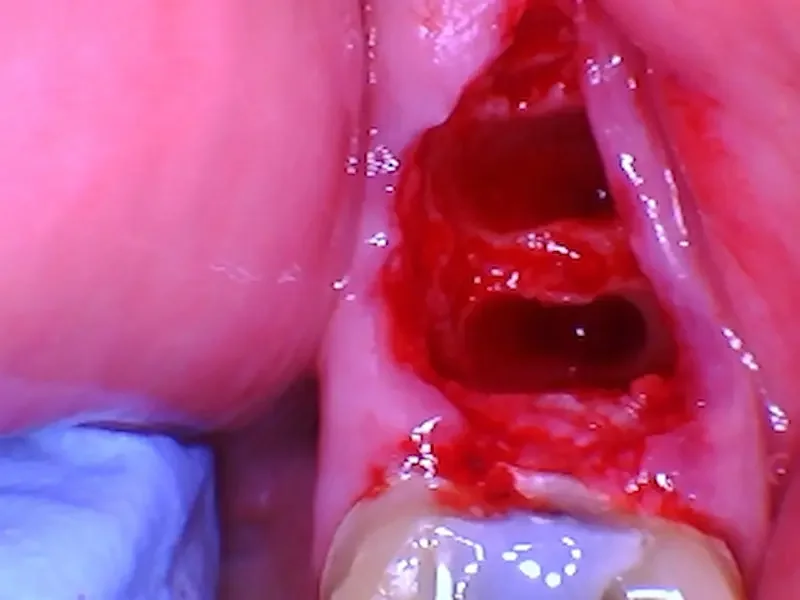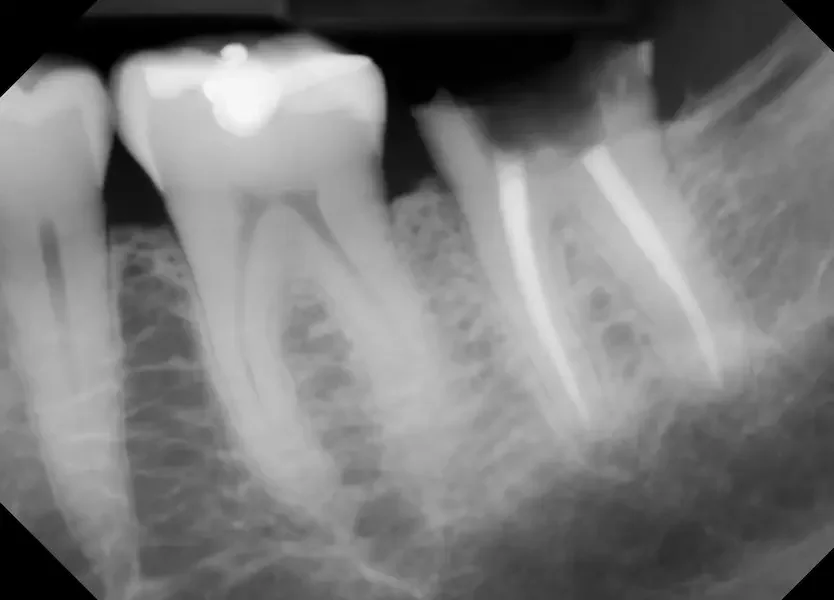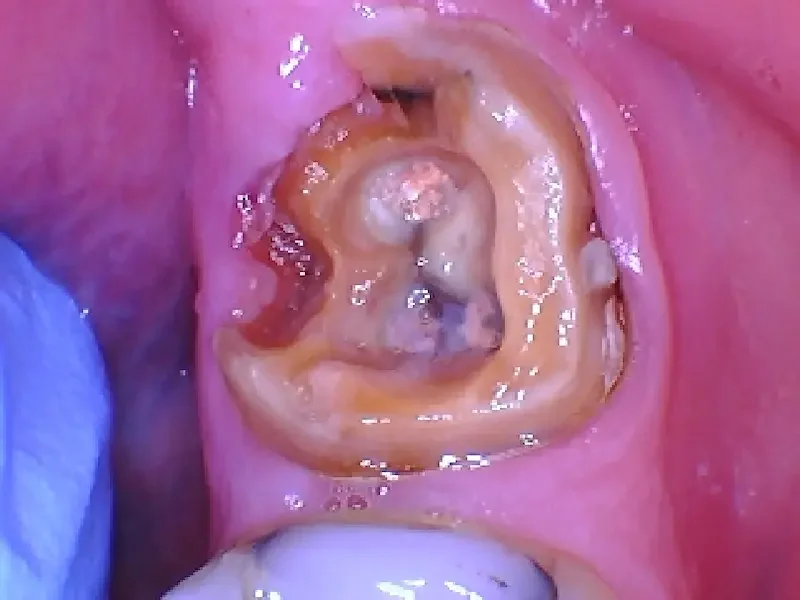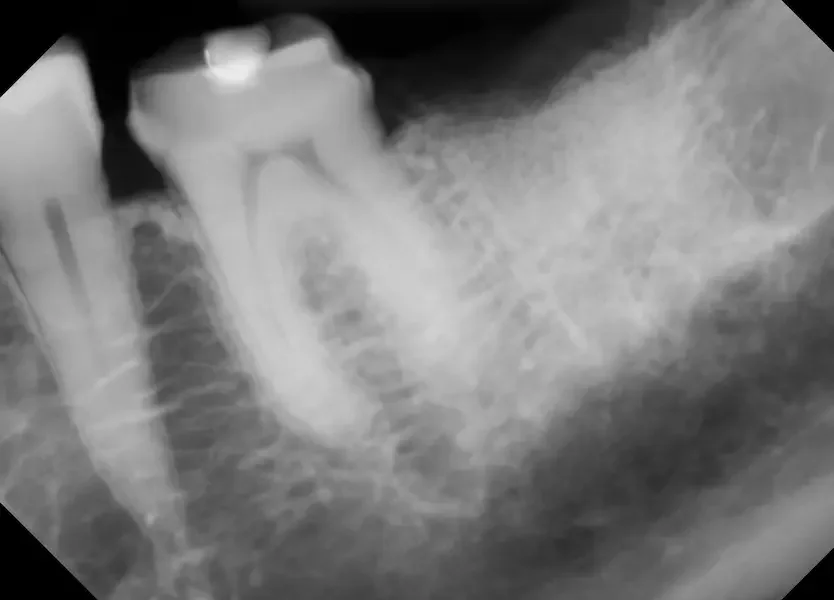Do I Need a Bone Graft After a Tooth Extraction?
If you’ve been told you need a tooth pulled, you might also hear your dentist mention a ‘bone graft.’ What does that really mean—and do you actually need one?
🩺 What a Bone Graft Does (in plain English)
The “socket” is the hole left over after the tooth is extacted.
When a tooth is pulled, there is a hole in your mouth! This is called the tooth socket.
If nothing is done at this point, your body heals by flowing blood into the socket and clotting, forming a “scab”. Eventually
(over about 3 months), this “scab” turns into natural bone and gum tissue. The hole is only there for about 2 weeks, because the gums heal faster than the bone.
Here’s the risk of not grafting: As the bone heals, it collapses from the cheek side.
When the bone and gums collapse, it causes a sunken-in appearance in your bone and gum tissue. Here’s when that bone collapse can be a problem:
If the collapse is in your smile line, it can be unaesthetic
If the collapse is where a future implant may be placed, often the collapse will mean there isn’t enough bone to predictably place an implant. This is the bigger concern usually with bone grafting.
This collapse happens fast. See the table below for multiple studies showing the same thing. In basic English: 8-12 weeks after the tooth was pulled, over HALF of the bone tends to be lost without bone grafting.
| Source (Full Citation) | Timeline Studied | Avg. Horizontal Bone Loss | Avg. Vertical Bone Loss | Key Takeaway |
|---|---|---|---|---|
| Araujo, M. G., & Lindhe, J. (2005). “Dimensional ridge alterations following tooth extraction: An experimental study in the dog.” Journal of Clinical Periodontology, 32(2), 212–218. | 8 weeks | ≈ 50% loss | — | Majority of ridge reduction occurs in the first 2 months. |
| Schropp, L., Wenzel, A., Kostopoulos, L., & Karring, T. (2003). “Bone healing and soft tissue contour changes following single-tooth extraction: A 12-month prospective study.” International Journal of Periodontics & Restorative Dentistry, 23(4), 313–323. | 12 months | ≈ 50% (~5–7 mm) | 1–2 mm | Two-thirds of shrinkage occurs within 3 months. |
| Tan, W. L., Wong, T. L., Wong, M. C., & Lang, N. P. (2012). “A systematic review of post-extraction alveolar ridge dimensional changes in humans.” Clinical Oral Implants Research, 23(Suppl 5), 1–21. | 6 months | 3.8 mm (mean) | 1.24 mm (mean) | Most bone loss happens early and is irreversible without grafting. |
| Van der Weijden, F., Dell’Acqua, F., & Slot, D. E. (2009). “Alveolar bone dimensional changes of post-extraction sockets in humans: A systematic review.” Journal of Clinical Periodontology, 36(12), 1048–1058. | 3–6 months | 29–63 % | 11–22 % | Majority of loss occurs in the first 3–6 months. |
| Misch, C. E. (2015). Contemporary Implant Dentistry (4th ed.). St. Louis, MO: Elsevier Mosby. | 6 months (summary) | Up to 60 % | Up to 40 % | Grafting at extraction maintains ridge form and simplifies future implant placement. |
Why does the bone loss matter?
It makes placing an implant less predictable, because implants need enough bone to support them long term.
What if I decide I want an implant later, but the bone has already collapsed?
In this case, different types of bone grafting are available. But it is usually more expensive and less predictable than filling the original tooth socket would have been.
When a Bone Graft Is Usually Recommended at the time of Tooth Extraction
You plan to get a dental implant in the future
Front tooth (esthetic zone) where gum shape matters
Larger infection or cyst that has already removed a large portion bone
Thinner bone around roots
In our St. Charles practice, roughly 6 out of 10 extractions include socket preservation because it prevents risk of a bigger surgery later.
⚖️ When A Bone Graft Might Be Optional (or you may not want one)
Molar tooth with no plan for implant
Already has thick bone support
Significant infection where graft won’t integrate well initially
Cost is a reason people choose against a bone graft
Ultimately, the best decision depends on your long-term plan for that space—if you want an implant, grafting right away usually saves you both time and money later. It also keeps options open should you change your mind about an implant later. If you definitely dont an implant, the graft is usually less important.
💰 Cost in the Kane County, IL Area
Range: $700–900 per tooth in Kane County
Insurance typically covers part if related to tooth loss
At Teuscher Legacy Dental, our fee for a socket preservation graft is $869. That fee includes appropriate healing membrane, sutures, and follow ups as necessary.
Watch out- often you may be quoted a lower fee for a bone graft, but additional fees for a healing membrane and other peripherals. Don’t get taken advantage of! For more tips on how to price compare this type of procedure, check our implant pricing blog post.
📸 Section 5: Real Case Example (Before/After Photos)
Here’s a case where Dr Brayden Teuscher extracted a molar tooth and placed a bone graft. We detailed this case further in this blog post.
X Ray of Molar Before Extraction
Photo of Molar Before Extraction
Photo of Tooth Socket After Extraction, Before Bone Graft
X Ray of Extraction Socket, after filling with bone graft
Photo of bone graft with collagen plug and white sutures over the top
🙌 What to Expect During Recovery
Some pain, bleeding, and swelling are normal! Usually at Teuscher Legacy Dental we see you for a post operative check and suture removal at 1 week after the procedure. Below I pasted the words from our post operative instructions that we give to every patient after this type of procedure:
1. Bleeding
· Keep the gauze in place, biting down firmly for 30-45 minutes.
· If bleeding persists, use wet gauze and bite down for another 30 minutes. Always wet gauze before placing or removing it. A damp black tea bag can also be used for this purpose
· Oozing for up to 48 hours, especially at night, is normal.
2. Managing Sensitivity and Swelling
· Take any recommended medication as directed.
· Apply an ice pack near the extraction site for 15 minutes on, 15 minutes off during the first 24 hours.
· Switch to a warm compress after 48 hours to improve healing.
· Sensitivity may be more noticeable at night—sleeping with your head elevated may help
3. Avoid Disrupting the Clot
· Avoid rinsing, spitting, or using a straw for 24 hours.
· Do not smoke or vape for at least 48-72 hours—this increases the risk of dry socket.
· Stick to soft, cool foods; avoid anything hot, crunchy, or spicy. Also avoid foods that may get lodged in the socket
4. Bone Graft Care
· If a bone graft was placed, do not touch or disturb the area, including the stitches or membrane if placed.
· It is normal for small granules or particles to leak out during the first few days.
5. Oral Hygiene
· Brush and floss normally, avoiding the extraction site for 24 hours.
· After 24 hours, you can rinse gently with warm saltwater (1/2 teaspoon salt in 8 oz water) 2-3 times daily.
o If you choose to do this, be gentle. If it is irritating, stop.
6. Rest and Recovery
Limit physical activity for the first 24-48 hours. Rest with your head slightly elevated to minimize swelling and bleeding
7. Contact us IF:
· Excessive bleeding that does not stop after applying pressure for 1-2 hours.
Signs of infection, such as fever, chills, severe pain, swelling, or foul-tasting drainage from the extraction site.
Numbness or tingling that persists for more than 24 hours.
If one of the above occurs and you are unable to reach us, go to the nearest hospital Emergency Room.
🧠 FAQ’s
Frequently Asked Questions About Bone Grafting After Tooth Extraction
| Question | Answer |
|---|---|
| How long does a bone graft take to heal? | Most socket grafts heal in 3–6 months before an implant can be placed. Factors like overall health, graft material, and site location can affect healing time. Learn more in our post on bone graft preservation case . |
| Can you get a dental implant without a bone graft? | Yes — but only if there’s enough bone remaining to stabilize the implant. In many cases, skipping grafting after extraction causes significant bone loss within months, as discussed in our dental implants guide . |
| Is bone grafting painful? | No — with modern techniques and gentle care, most patients describe it as mild soreness similar to an extraction site. Our team uses advanced methods discussed in our St. Charles tooth extraction page to keep you comfortable during recovery. |
| What happens if I skip bone grafting? | Without a graft, the socket shrinks rapidly—losing up to half its width in just a few months. That can make future implants or bridges more difficult and expensive. See the full breakdown of costs and timing in our dental implant pricing article . |
| What materials are used for bone grafting? | We use biocompatible materials such as allograft (human donor bone), xenograft (bovine), and synthetic grafts, often covered with a collagen membrane and PRF to enhance healing. Details and case examples are shown in our bone graft case study . |
Information in this article is based on studies published in the Journal of Clinical Periodontology, International Journal of Periodontics & Restorative Dentistry, and Clinical Oral Implants Research. Clinical examples and post-operative guidelines are from Teuscher Legacy Dental’s own St. Charles, IL practice.
More Resources!
🧭 Want to Consult in Person? Or Want us to pull your tooth?
If you’re facing an extraction, our trained, award winning team in St. Charles can help you understand whether bone grafting makes sense for you—and show real examples of how it preserves your smile for years to come.
Schedule your visit →







